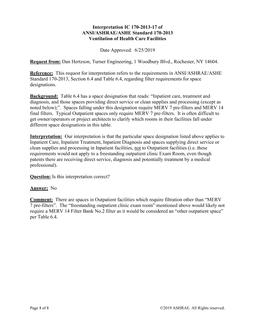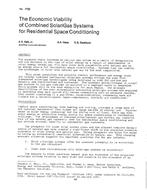From substantial epidemiologic studies that have assessed the risks of passive smoking, it is well known that Environmental Tobacco Smoke (ETS) exposure in indoor environments is a health risk and causes odor discomfort issues and respiratory irritation. Although ASHRAE and many other international institutions have determined smoking bans are the only effective control strategy to minimize the indoor ETS exposure (and its associated health risk), there are still public places, such as entertainment venues, that are exempted from smoking bans. HVAC systems in such spaces require a significant amount of outdoor air (up to 30 ACH) to dilute ETS and to achieve the typical building code mandate, making them extremely demanding of energy. The use of an Energy Recovery Ventilator (ERV) in such a setting has the potential to substantially reduce the energy cost of the ventilation system. This work investigates the influence of ETS on the performance of paper- and polymer-based materials used in plate-type ERVs via accelerated ETS exposure tests. Results are reported for the transport of water vapor (flux), oxygen gas crossover, VOC crossover, and pressurized air crossover-leakage through two different types of commercially available ERV membranes. Comparisons are also made between the ETS loadings on coated and uncoated sides of polymer membrane samples to examine the impact of the particular membrane surface exposed (ERV installation direction) with respect to the ETS-laden exhaust airstream. We find that, as a result of ETS loadings equivalent to about two years of operation in a typical casino in North America, the water vapor flux through polymer- and paper-based membrane samples is reduced to 70%-34% of the initial value. In general, polymer-based membranes have much greater initial water vapor fluxes making them more desirable candidates for in-field longevity. For polymer membranes, ETS loading on the uncoated side of membrane samples tends to have a higher impact on water vapor transport than identical loading on the coated membrane side. Preliminary results from pressurized air leakage and crossover tests indicate that paper-based membranes are significantly more permeable to gases, odors, and other unwanted contaminants and therefore less selective for water vapor transport.
Citation: ASHRAE and AIVC IAQ 2016 Conf
Product Details
- Published:
- 2016
- Number of Pages:
- 8
- Units of Measure:
- Dual
- File Size:
- 1 file , 2.2 MB
- Product Code(s):
- D-2016IAQ-6


